Input interpretation

fenarimol
Chemical names and formulas
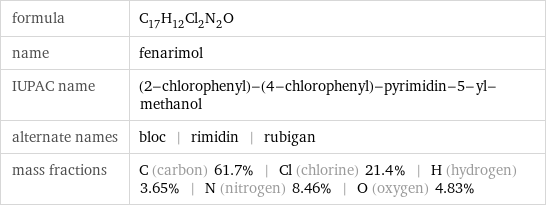
formula | C_17H_12Cl_2N_2O name | fenarimol IUPAC name | (2-chlorophenyl)-(4-chlorophenyl)-pyrimidin-5-yl-methanol alternate names | bloc | rimidin | rubigan mass fractions | C (carbon) 61.7% | Cl (chlorine) 21.4% | H (hydrogen) 3.65% | N (nitrogen) 8.46% | O (oxygen) 4.83%
Lewis structure
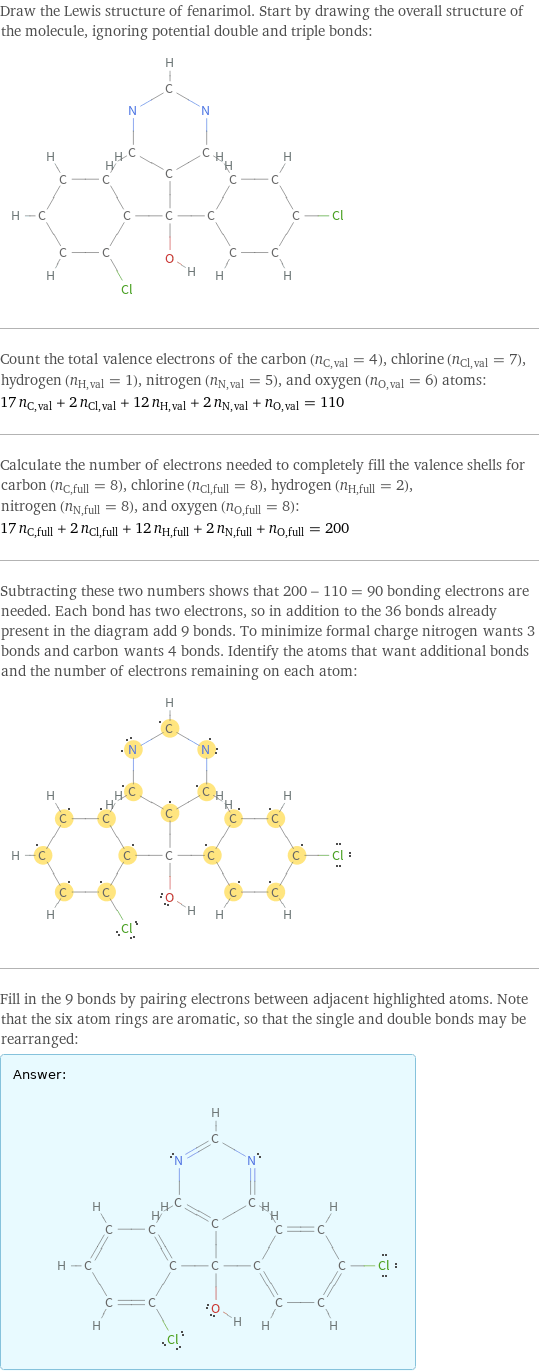
Draw the Lewis structure of fenarimol. Start by drawing the overall structure of the molecule, ignoring potential double and triple bonds: Count the total valence electrons of the carbon (n_C, val = 4), chlorine (n_Cl, val = 7), hydrogen (n_H, val = 1), nitrogen (n_N, val = 5), and oxygen (n_O, val = 6) atoms: 17 n_C, val + 2 n_Cl, val + 12 n_H, val + 2 n_N, val + n_O, val = 110 Calculate the number of electrons needed to completely fill the valence shells for carbon (n_C, full = 8), chlorine (n_Cl, full = 8), hydrogen (n_H, full = 2), nitrogen (n_N, full = 8), and oxygen (n_O, full = 8): 17 n_C, full + 2 n_Cl, full + 12 n_H, full + 2 n_N, full + n_O, full = 200 Subtracting these two numbers shows that 200 - 110 = 90 bonding electrons are needed. Each bond has two electrons, so in addition to the 36 bonds already present in the diagram add 9 bonds. To minimize formal charge nitrogen wants 3 bonds and carbon wants 4 bonds. Identify the atoms that want additional bonds and the number of electrons remaining on each atom: Fill in the 9 bonds by pairing electrons between adjacent highlighted atoms. Note that the six atom rings are aromatic, so that the single and double bonds may be rearranged: Answer: | |
3D structure
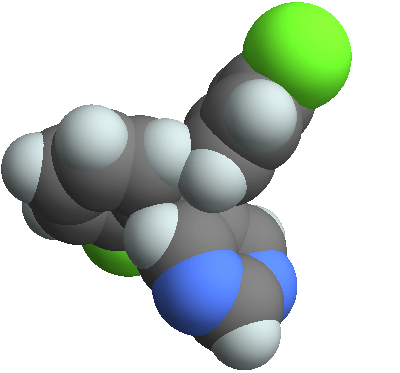
3D structure
Basic properties
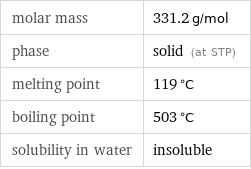
molar mass | 331.2 g/mol phase | solid (at STP) melting point | 119 °C boiling point | 503 °C solubility in water | insoluble
Units

Solid properties (at STP)

vapor pressure | 6×10^-11 mmHg (at 25 °C)
Units

Thermodynamic properties

molar heat of vaporization | 81.3 kJ/mol specific heat of vaporization | 0.245 kJ/g (at STP)
Chemical identifiers
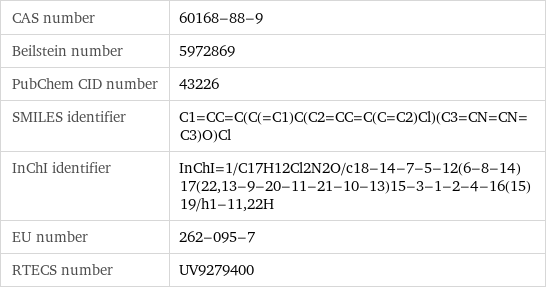
CAS number | 60168-88-9 Beilstein number | 5972869 PubChem CID number | 43226 SMILES identifier | C1=CC=C(C(=C1)C(C2=CC=C(C=C2)Cl)(C3=CN=CN=C3)O)Cl InChI identifier | InChI=1/C17H12Cl2N2O/c18-14-7-5-12(6-8-14)17(22, 13-9-20-11-21-10-13)15-3-1-2-4-16(15)19/h1-11, 22H EU number | 262-095-7 RTECS number | UV9279400
Safety properties

flash point | 258 °C

DOT hazard class | 6.1 DOT numbers | 3017
Toxicity properties

RTECS classes | agricultural chemical and pesticide | mutagen | reproductive effector